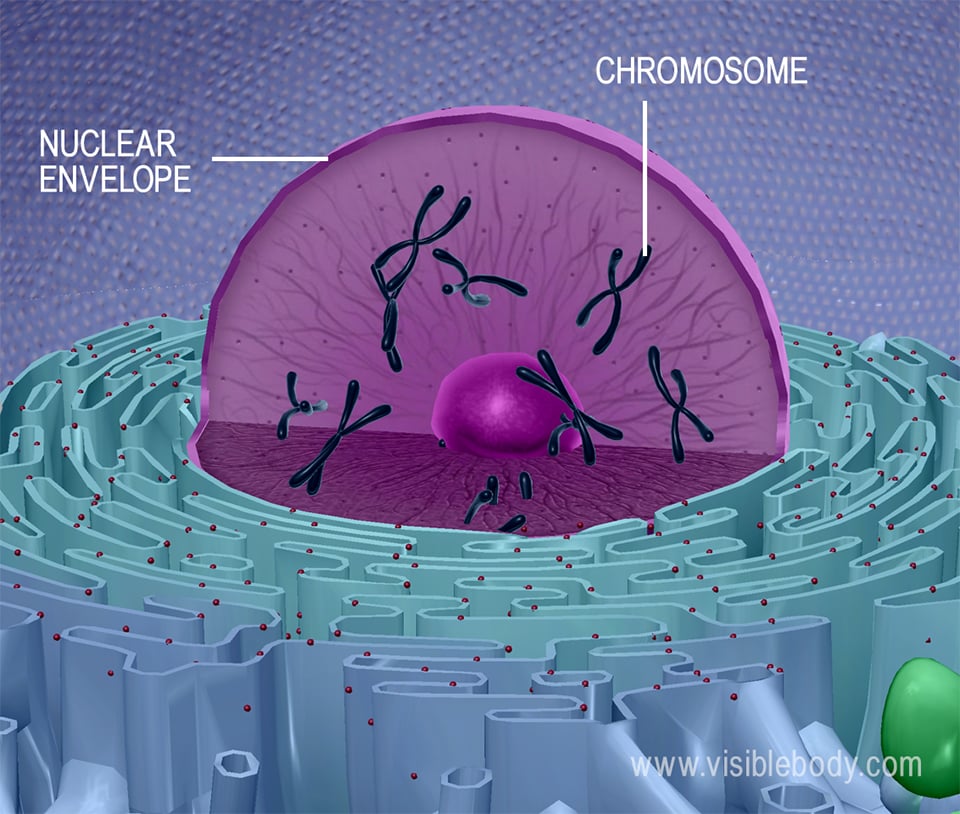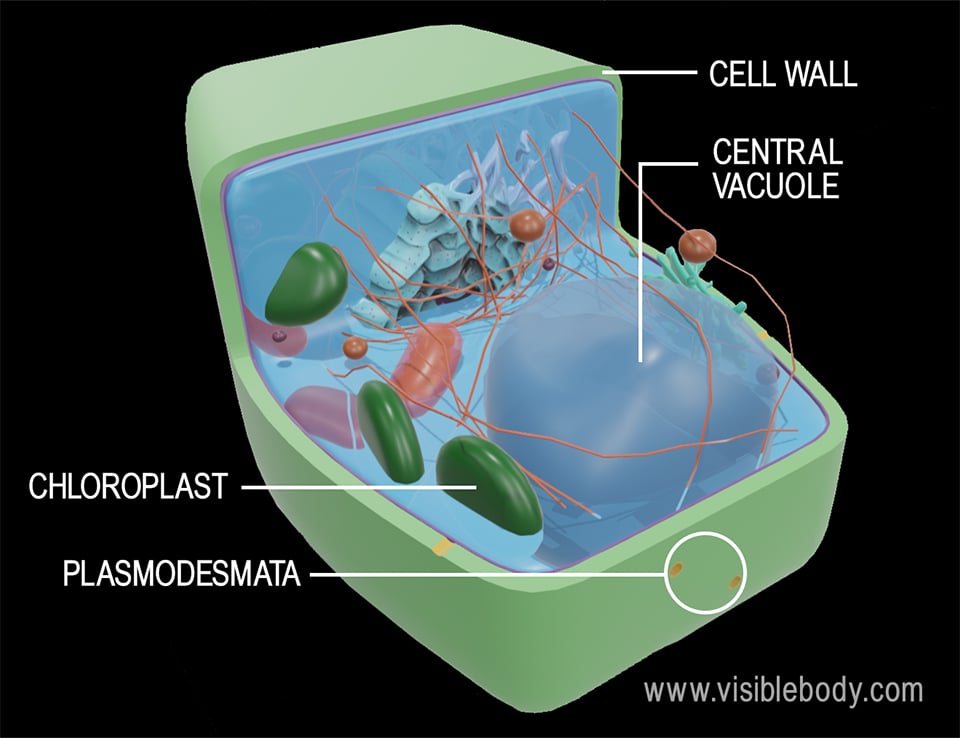Is Nucleus In Both Plant And Animal Cells
Eukaryotic cells are found in plants, animals, fungi, and protists. They generally have a nucleus—an organelle surrounded by a membrane called the nuclear envelope—where DNA is stored. At that place are a few exceptions to this generalization, such as human red claret cells, which don't take a nucleus when mature. Eukaryotic cells are typically larger than prokaryotic cells, ranging from around 10 to 100 μm in diameter. While many eukaryotes consist of multiple cells, there are also single-celled eukaryotes. Like bacteria, animal cells accept a plasma membrane, cytoplasm, and Dna. Nonetheless, you'll discover that the within and outside of animal cells looks quite different from that of bacteria. For ane, brute cells don't take a cell wall. Instead, they have a cytoskeleton, a network of filaments composed of proteins. The cytoskeleton provides support and internal transport for the cell. In improver, most brute cells accept a nucleus, a special organelle that stores DNA. The Deoxyribonucleic acid within the nucleus is usually organized into strings called chromosomes. The cytoplasm of animal cells is filled with a variety of organelles that aid the cells survive and reproduce. Hither are some key cytoplasm-dwelling organelles and their functions: Organelle Function Centrosome The centrioles and pericentriolar material within play a office in jail cell sectionalisation and building microtubules Golgi appliance Modifies, sorts and packs proteins into transfer vesicles, and then they tin can go elsewhere in the cell or be secreted Lysosomes & peroxisomes Help remove waste matter, break down toxic compounds, and recycle cell structures Mitochondria Generate energy Ribosomes Synthesize proteins Rough endoplasmic reticulum Continuous with outer layer of nuclear envelope and has ribosomes embedded on the outer membrane; helps ship materials within the cell; segregates newly-made proteins for transport by vesicles Polish endoplasmic reticulum Separate from the nuclear membrane, but continuous with the rough endoplasmic reticulum, and does non contain ribosomes; site of lipid synthesis, carbohydrate metabolism and detoxification; helps transport materials within the cell Vesicles Pocket-sized bleary sacs that transport materials within the cell; tin can fuse with the cell membrane to release contents Like fauna cells and other eukaryotic cells, plant cells have a nucleus that stores their DNA. However, plant cells differ from animal cells in several of import ways. First, unlike animal cells, plant cells accept a cell wall, which is very dissimilar from prokaryotic cell walls. Institute jail cell walls have channels called plasmodesmata (sg. plasmodesma) that let cells to communicate by passing sugars, ions, and even proteins and RNA from one prison cell to some other. Animal and found cells both have mitochondria. Mitochondria use glucose and oxygen to behave out cellular respiration and create ATP, a molecule that powers processes throughout the prison cell. In improver to mitochondria, found cells as well have special structures called chloroplasts that are essential to the process of photosynthesis. In this process, plants use low-cal, water, and carbon dioxide to produce glucose, which can later be cleaved down by cellular respiration. Did you know that mitochondria and chloroplasts have their own Deoxyribonucleic acid, dissever and singled-out from the DNA in the nucleus? Another structure that is present in plant cells, merely not in animal cells, is the central vacuole. In constitute cells, central vacuoles are used to maintain turgor pressure past keeping the large vacuole filled with water to support the cell. Here are the structures that are unique to animal cells, assorted with the ones that are unique to plant cells: In Animate being Cells Merely In Institute Cells Only What is a eukaryote? A look at animal and establish cells
ane. Establish and animal cells are eukaryotic, significant that they have nuclei
two. Fauna cells are supported by a cytoskeleton, use mitochondria to generate energy, and use lysosomes to assist remove waste
Brute prison cell


3. Institute cells are supported by a cell wall, utilize chloroplasts to bear out photosynthesis, and comprise a large key vacuole that stores water
Establish cell


4. A quick comparison of plant and animal cells
Centrosomes
CentriolesCell wall
Primal vacuole
Chloroplasts
Plasmodesma


Source: https://www.visiblebody.com/learn/biology/cells/eukaryotic-cells
Posted by: whitmorethisch.blogspot.com

0 Response to "Is Nucleus In Both Plant And Animal Cells"
Post a Comment